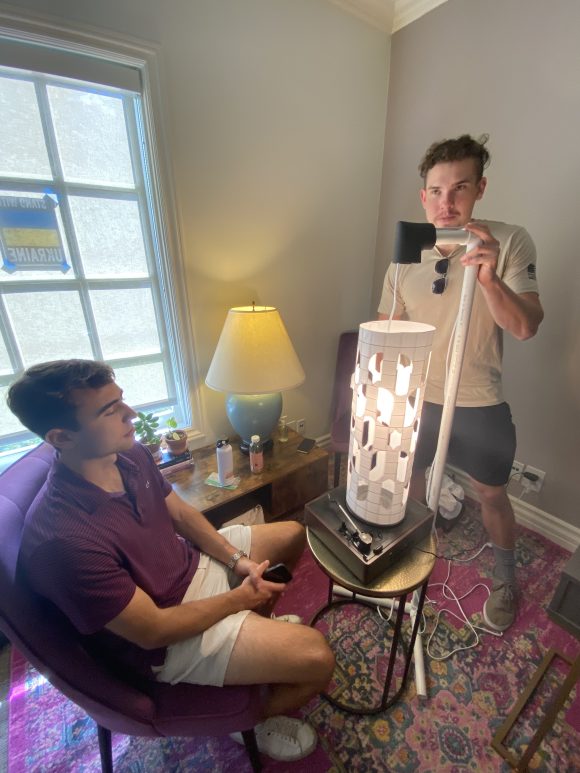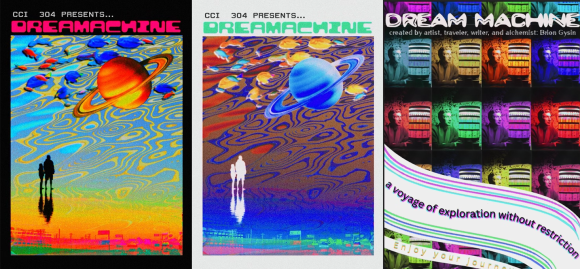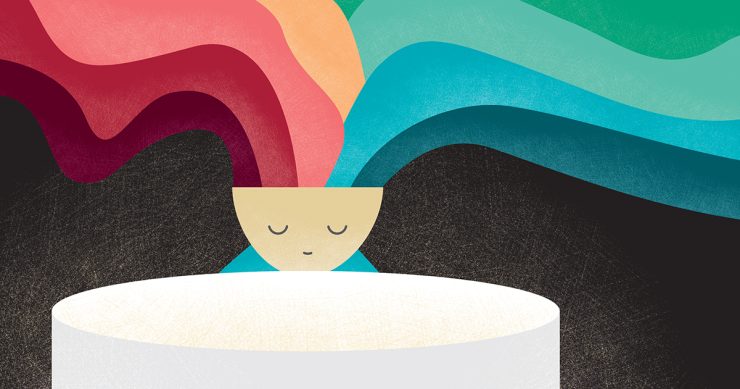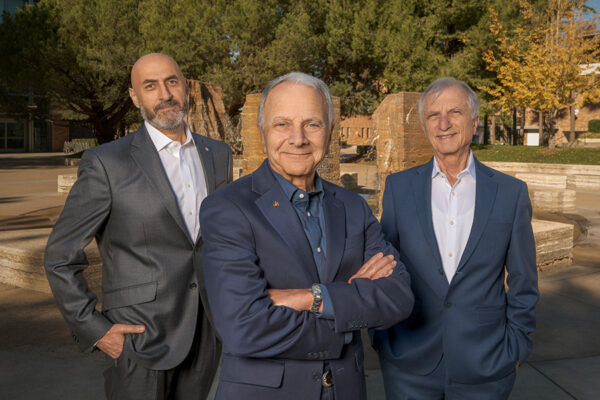
It’s just a small tent, but the sign on the front that reads “Dream Machine” suggests something big is happening.
Inside is a plastic cylinder attached to a turntable. Users sit with their eyes closed and headphones on, listening to soothing music while the device spins, projecting a shifting pattern of light through holes in the cylinder. During the 20-minute session, most users begin to experience hallucinations. From colored lights to waves to sunlight in a forest, the experience is unique for each participant.
The Dream Machine was constructed by students in professor Patrick Fuery’s “Content Creation” course, part of the Creative and Cultural Industries (CCI) minor at Chapman University. The Dream Machine is based on a device created by artist Brion Gysin and mathematician Ian Sommerville in the early 1960s and more recently studied by leading neuroscientists in the United Kingdom.
So how did a group of content creation students end up involved in neuroscience research?
“I honestly had no idea what to expect when Dr. Fuery dropped the project on us,” says Cooper Scott ’23, who is majoring in strategic and corporate communications with a minor in CCI. “This is not something that I would normally do in a typical class.”
The goal of the assignment, according to Fuery, was for students to learn to think outside the box in creating content.
“I said to them at the beginning of the course, ‘It’s really easy to film a cat falling in a toilet and get 100,000 views.’ Social media is not a hard thing to teach,” says Fuery, who is the founding director of the Center for Creative and Cultural Industries at Chapman. “What is hard is coming up with something that is different, more creative and more informed. More intelligent.”
Project Unites Multiple Creative Industries

The project required collaboration between teams of students on each aspect of the project — construction, music, graphic design and social media.
“It allowed us to explore different avenues of content creation through this one project,” says Rebecca Day ’23, a business administration major with an emphasis in marketing. “We were utilizing so many different kinds of creative industries in one project.”
Understanding how art, design, music and other creative disciplines interact is at the core of the CCI minor, which explores the full range of creative industries such as museums, fashion, film and gaming. The program attracts students from a wide variety of majors including business administration, communications and film, and lays a foundation for creative thinking regardless of career path.
For the students who built it, the Dream Machine became a deep lesson about creativity.
”I had a moment where I realized my brain was showing me this incredible art display that I had virtually zero conscious control over. It was just my subconscious brain feeding me all that stuff,” says Scott, who describes how his hallucinatory experience in the Dream Machine changed his perspective on marketing, messaging and the creative process in general.
“All of a sudden I could see how my conscious brain might interpret a message in one way, but if I showed it to somebody, what would their subconscious brain tell them?” he says. “There’s a whole side of my subconscious that I can’t tap into consciously. It made me think about ways that I could use that subconscious creativity in a tangible way.”
That, says Fuery, is the main goal of the CCI minor.
“The program gives the capacity to figure out how to be a more creative, divergent thinker – how to take all the things they’re doing in their major or what they want to do in their career and reimagine it in a more divergent way,” he says.
Following the Dream Machine’s popular debut during the Student Scholar Symposium in December 2022, the CCI students presented the device at the 2023 National Conference on Undergraduate Research at the University of Wisconsin-Eau Claire in April.
View this post on Instagram




